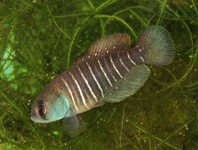Abstract
Heliothrips (Parthenothrips) octarcticulatus was originally described by Schmutz (1913) from Sri Lanka. Subsequently, Hood (1954) described from Taiwan a new genus and species Copidothrips formosus, and then Stannard and Mitri (1962) described a further new genus and species, Mesostenothrips kraussi, from Kiribati and Gibert Islands. Bhatti (1967, 1990), recognized that only a single genus and species was involved amongst these names, established the resultant synonymies, and recorded the species octarcticulatus from various localities between the Seychelles and five different Pacific Island groups. It has also been recorded from Northern Australia, and Thailand (ThripsWiki 2021) as well as Christmas Island in the Indian Ocean (Mound 2019). Despite these records, there is little reliable information about host plants and biology apart from Piper myristicum on Pohnpei island (Micronesia), and also damage caused to the leaves of Aglaonema and Spathoglottis at Darwin in Australia (Mound & Tree 2020). In this note, we add a further interesting host record and describe the previously unknown male as well as the larvae of this species.
References
Bhatti, J.S. (1967) Thysanoptera nova Indica. Published by the author, Delhi, 24 pp.
Bhatti, J.S. (1990) Catalogue of insects of the Order Terebrantia from the Indian Subregion. Zoology (Journal of Pure and Applied Zoology), 2, 205–352.
https://doi.org/10.46318/zoology.2.4.1990.205-352
Hood, J.D. (1954) Three new Heliothripine Thysanoptera from Formosa. Proceedings of the Entomological Society of Washington, 56, 188–193.
Jacq, F.A., & Meyer, J.-Y. (2012) Taux de mortalité et causes de disparition de Apetania raiateensis (Campanulaceae), une plante endémique de l’île de Raiatea (Polynésie Française) Reviste d’Ecologie, Terre Vie, 67, 57–72.
Mound, L.A. (2019) Thrips (Thysanoptera) of the Australian Territory of Christmas Island, Indian Ocean. Australian Entomologist, 46 (4), 167–170.
Mound, L.A. & Tree, D.J. (2020) Thysanoptera Australiensis—Thrips of Australia. Lucidcentral.org, Identic Pty Ltd, Queensland, Australia. Available from: https://keys.lucidcentral.org/keys/v3/thrips_australia/ (accessed 4 March 2021)
Schmutz, K. (1913) Zur Kenntnis der Thysanopterenfauna von Ceylon. Sitzungsberichte der Kaiserlichen Akademie der Wissenschaften, 122 (7), 991–1089, 6 pls.
Stannard, L.J. & Mitri, T.J. (1962) Preliminary studies on the Tryphactothrips complex in which. Anisopilothrips, Mesostenothrips and Elixothrips are erected as new genera (Thripidae: Heliothripinae). Transactions of the American Entomological Society, 88, 183–224.
ThripsWiki (2021) ThripsWiki—providing information on the World’s thrips. Available from: http://thrips.info/wiki/ (accessed 19 February 2021)
Vierbergen, G., Kucharczyk, H. & Kirk, W.D.J. (2010) A key to the second instar larvae of the Thripidae of the Western Palaearctic. Tijdschrift voor Entomologie, 153 (1), 99–160.
https://doi.org/10.1163/22119434-900000294


